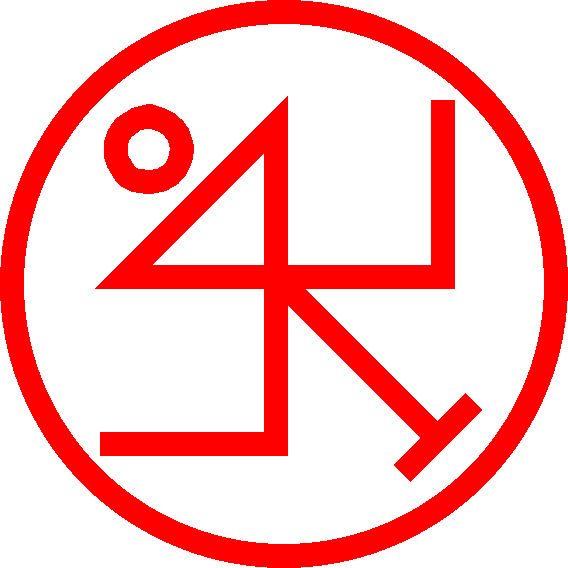| Hebrew | Greek | Coptic6,7 | Value | |||
|---|---|---|---|---|---|---|
| א | Aleph | Α α | Alpha | Ⲁ ⲁ | Alfa | 1 |
| ב | Beth | Β β | Beta | Ⲃ ⲃ | Vita | 2 |
| ג | Gimel | Γ γ | Gamma | Ⲅ ⲅ | Ghamma | 3 |
| ד | Daleth | Δ δ | Delta | Ⲇ ⲇ | Delta | 4 |
| ה | He | Ε ε | Epsilon | Ⲉ ⲉ | Ei | 5 |
| ו | Vav | Ϝ ϝ Ϛ ϛ, ΣΤ στ | Digamma2 Stigma2,3 | Ⲋ ⲋ | Soo8 | 6 |
| ז | Zayin | Ζ ζ | Zeta | Ⲍ ⲍ | Zita | 7 |
| ח | Cheth | Η η | Eta | Ⲏ ⲏ | Ita | 8 |
| ט | Teth | Θ θ | Theta | Ⲑ ⲑ | Thita | 9 |
| י | Yod | Ι ι | Iota | Ⲓ ⲓ | Yota | 10 |
| כ | Kaph | Κ κ | Kappa | Ⲕ ⲕ | Kappa | 20 |
| ל | Lamed | Λ λ | Lambda | Ⲗ ⲗ | Lamda | 30 |
| מ | Mem | Μ μ | Mu | Ⲙ ⲙ | Mei | 40 |
| נ | Nun | Ν ν | Nu | Ⲛ ⲛ | Nei | 50 |
| ס | Samekh | Ξ ξ | Xi | Ⲝ ⲝ | Exi | 60 |
| ע | Ayin | Ο ο | Omicron | Ⲟ ⲟ | Omicron | 70 |
| פ | Pe | Π π | Pi | Ⲡ ⲡ | Pi | 80 |
| צ | Tzaddi | Ϙ ϙ, Ϟ ϟ | Koppa2,4 | Ϥ ϥ | Fai | 90 |
| ק | Qoph | Ρ ρ | Rho | Ⲣ ⲣ | Ro | 100 |
| ר | Resh | Σ σ, ς | Sigma5 | Ⲥ ⲥ | Seema | 200 |
| ש | Shin | Τ τ | Tau | Ⲧ ⲧ | Tav | 300 |
| ת | Tav | Υ υ | Upsilon | Ⲩ ⲩ | Epsilon | 400 |
| ך | Kaph (final)1 | Φ φ | Phi | Ⲫ ⲫ | Fei | 500 |
| ם | Mem (final)1 | Χ χ | Chi | Ⲭ ⲭ | Kai | 600 |
| ן | Nun (final)1 | Ψ ψ | Psi | Ⲯ ⲯ | Epsi | 700 |
| ף | Pe (final)1 | Ω ω | Omega | Ⲱ ⲱ | Omega | 800 |
| ץ | Tzaddi (final)1 | Ϡ ϡ | Sampi2 | Ⳁ ⳁ | Sampi9 | 900 |
Notes
- The five “final” Hebrew letters are the forms of those letters when used at the end of a word (and Hebrew writes from right to left). All other letters have the same form regardless of position in a word. For example, kab would be כב (value 20+2), but bak would be בך (value 2+500).
- The Greek letters digamma, stigma, koppa, and sampi were lost as “full” letters in the evolution of the language, but were retained as symbols for their respective numbers. That’s why you may not remember them from any math or astronomy courses.
- The letter stigma (Ϛ ϛ) is a ligature of the letters sigma and tau, so it represents the sound combination “st”. Whenever this combination occurs in that order, it is correct to count the two letters together as having the value 6, rather than 500 as they would have separately (or if the tau came first).
- The Greek letter koppa (sometimes spelled qoppa in English) has two different forms, the “Q-like” form which was used in archaic times, which later evolved into the “zig-zag” form.
- The Greek letter sigma has two lower-case forms, one used at the end of words only (ς) and one used anywhere else in a word (σ). Unlike the Hebrew final letter forms, however, both lowercase sigmas have the same value as each other (and as the uppercase form).
- Coptic has an additional six letters; the gematria table only includes the twenty-seven with numerical values. If you’re curious about the other letters, see the table below.
Coptic Letters With No Numerical Value Ϣ ϣ Shai Ϧ ϧ, Ⳉ ⳉ Khai Ϩ ϩ Hori Ϫ ϫ Janja Ϭ ϭ Cheema Ϯ ϯ Ti - Coptic alphabetic order is unusual, with fai being in a strange place, and the non-numeric letters coming before sampi. The order is alfa vita ghamma delta ei soo zita ita thia yota kappa lamda mei nei exi omicron pi (fai is skipped here) ro seema tav epsilon fei kai epsi omega shai fai (now included) khai hori janja cheema ti sampi. Yes, this means the letter with the value 90 (fai) comes two positions after the letter with the value 800 (omega).
- The Coptic letter soo takes its shape from the Greek stigma, which also has the value 6 (see note 3 above). Its name is simply the Coptic word for the number “six”, which in turn derived from Middle Egyptian sjsw.
- The Coptic letter sampi, like the Greek letter it shares a value and name with, is not considered a “normal” letter for writing words and is only used for numbers.
